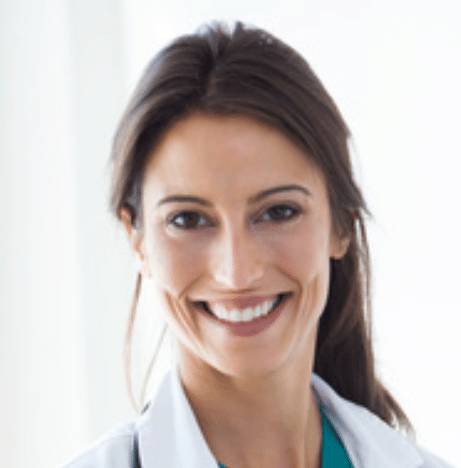Does LSD Show Up on a Drug Test?

Medically Verified: 2/1/24
Medical Reviewer
Chief Editor

All of the information on this page has been reviewed and verified by a certified addiction professional.
Lysergic Acid Diethylamide, more commonly known as LSD or acid, is a popular hallucinogenic drug known for its psychedelic side effects and long-lasting duration. The drug is made from lysergic acid, which is a substance that is derived from a fungus found on rye and other grains.
LSD typically comes in the form of blotter paper that has been divided into decorative squares and dosed with liquid LSD solution. It is taken orally and the effects can last up to 12 hours.
While an old myth caused many people to believe that LSD stays in your spinal cord for the rest of your life after you take it, this has proven to be false. Studies have found that LSD leaves your system within 1-2 days. Up to 50% of the drug can leave your body in as little as five hours.
Whether or not LSD shows up on a drug test depends on the type of drug test used and how long it has been since you’ve taken LSD. On average, LSD can be detected on a urine test for 2-4 after the last use.
How Long Do the Effects of LSD Last?
After it is ingested, the effects of LSD begin within 30-90 minutes. The onset and duration of effects vary based on the dose taken and method of use, but the effects, also known as a “trip,” usually last between 8 and 12 hours.
Common effects of LSD include:
- Pupil dilation
- Dry mouth
- Appetite loss
- Sweating
- Increased body temperature
- Impaired judgment
- Visual hallucinations
- Changes in perception
- Euphoria
- Feeling like one “hears” colors or “sees” sounds
- Distorted sense of surroundings
- Distorted sense of self
- Delusions
- Mood swings
- Panic and anxiety
How is LSD Metabolized?
LSD is absorbed by the gastrointestinal tract and is then metabolized by the liver. The liver breaks LSD down into 2-oxy-LSD and 2-oxo-3-hydroxy LSD and other smaller metabolites that may be detected by a drug test.
LSD has a half-life of about 3.6 hours and it takes 4-5 half-lives to eliminate a drug from your body. As a result, a single dose of LSD will leave your system between 14.5 and 18 hours.
Will LSD Show Up on a Drug Test?
Most standard drug tests do not screen for hallucinogens like LSD. For example, a standard, 5-panel urinalysis test will not test for LSD. However, a urine sample can be sent off to a lab for analysis, where further testing can detect LSD.
With that being said, it is possible for LSD to show up on various types of drug tests. Although saliva tests generally can’t detect LSD, urine, blood, and hair tests may be able to.
How long LSD will show up on a drug test depends on various factors, such as how often you take LSD, the dose you took, and other factors.
Average detection times for healthy individuals are as follows.
- Urine – The most popular type of drug test is a urine test because they are affordable, accurate, easy to administer, and minimally invasive. While most standard urine tests don’t screen for LSD, LSD and its metabolites can be detected in urine for 2-4 days after your last dose.
- Blood – Blood tests are fairly invasive and there is a level of skill required to get a blood sample, so they are generally used in medical settings only. Blood tests also have a short detection window, so they are typically only used to confirm intoxication. LSD can show up on a blood test for 6-12 hours after it is ingested.
- Hair – Hair tests look for traces of drugs in the hair follicle. A hair test can detect LSD for up to 90 days (three months) after your last dose.
Factors that Affect How Long LSD Stays in Your System
LSD can be detected in some people for longer periods of time than in others. Factors that affect how long LSD stays in your system include:
- Dosage – The amount of LSD taken can influence how long it stays in the system. Higher doses may take longer to be eliminated.
- Metabolism – Individual variations in metabolism can affect how quickly LSD is processed and eliminated from the body. Factors such as age, genetics, and overall health can play a role.
- Body composition – Body fat percentage can impact drug elimination. LSD, being a fat-soluble substance, may be retained longer in individuals with higher body fat levels.
- Liver function – The liver plays a significant role in metabolizing drugs. If liver function is compromised, it may affect the clearance of LSD from the system.
- Urinary pH – The pH level of urine can influence the elimination of LSD. Alkaline urine tends to promote faster excretion of the drug, while acidic urine may result in slower elimination.
- Hydration – Adequate hydration helps maintain urine flow and can facilitate the elimination of LSD and its metabolites from the body.
- Combining LSD with other substances – If other substances are used concurrently with LSD, they may interact and affect the metabolism and elimination of the drug.
Get Help Today
If you or a loved one frequently abuse LSD or other drugs, you may be struggling with a substance use disorder.
At Carolina Center for Recovery, we take pride in our commitment to healing families as a whole. Recovery is not only for those who have abused drugs and alcohol but also for those who have suffered the trauma of loving someone with substance use disorder. Let our family help yours! Call today to discuss your treatment options with a trusted admissions counselor.
References:
- National Library of Medicine: Lysergic Acid Diethylamide (LSD), Retrieved July 2023 from https://www.ncbi.nlm.nih.gov/books/NBK482407/
- National Library of Medicine: Metabolism of lysergic acid diethylamide (LSD): an update, Retrieved July 2023 from https://pubmed.ncbi.nlm.nih.gov/31266388/

